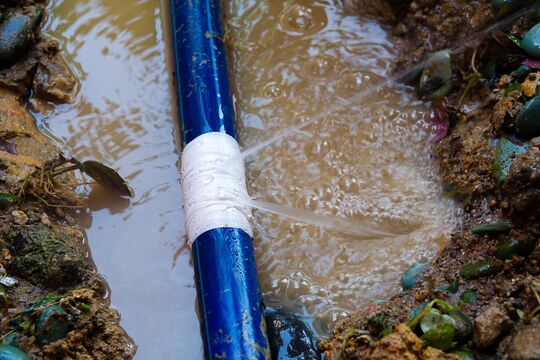
Polybutylene Water Line: Swiss cheese or a sieve? Either way, $$$ of water lost
For Mary, it all started when she opened her water bill and saw the total: $1,200.
“The water meter was running and running,” she said.
In San Diego, where she lives, the average monthly water bill was roughly $80 for a family, and Mary was an older woman living alone. Her bill, which was usually around $50, was suddenly – and quite shockingly - 24 times what she expected.
Mary had a big problem, but she also had a solution: SLWA Insurance Services. She had received a mailing through her local utility about the program and the optional repair service plan for her sewer and water service lines, which she enrolled in more than 5 years ago.
“I got (the notice) in the mail,” she said. “I thought, ‘this is really interesting,’ although my next-door neighbor thought that they didn’t need it. I have the sewer plan, too. I just thought (the plan) was a good idea and it’s a good idea to be prepared.”
Now that she had a huge water bill, she knew that she had an issue with her plumbing. There weren’t any clear signs of a plumbing problem in her home, so it was likely her water service line, dumping water into the ground, undetectable to the naked eye.
Mary called SLWA and Drain Medic RX Plumbing was dispatched to determine why Mary’s water bill was so high. At first, it appeared that it was a simple water service line leak. However, the job didn’t prove to be so simple – there were multiple leaks in the line, and, although the plumber could have patched them individually, it just made more sense to replace the entire 70-foot polybutylene water service line with copper.
“I got (the notice) in the mail. I thought, ‘this is really interesting.’ I have the sewer plan, too. I just thought (the plan) was a good idea and it’s a good idea to be prepared.”
“The plumber came out right away,” Mary said. “The plumbing company was very nice and polite.”
Frequently used between the 1970s and 1990s, it has since been discovered that polybutylene often can break down when exposed to many of the common substances used to treat water, along with introducing microplastics and toxins to the water. Hence, Mary’s line becoming holier than Swiss cheese, resulting in multiple problem areas being identified during the leak detection process and the entirety of the line needing to be replaced.
Luckily, because Mary had enrolled in a plan from SLWA, the entire $3,500 cost to replace the line was covered and she didn’t have to find that money on top of dealing with a $1,000-plus water bill.
“I could have paid it, but I wouldn’t have been happy,” Mary said. “Enough other things go wrong that I don’t need that.”
Published July 16, 2024